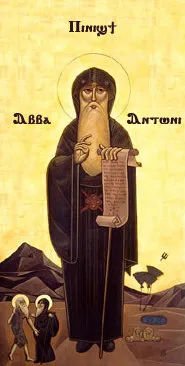In Orthodoxy, it is customary to be guided by a practice that has justified itself for centuries. In ancient times, the holy fathers saw the manifestations of the Holy Spirit en masse. Thus, the decisions of all Seven Ecumenical Councils have been tested by time. From practice, from the fruits of the Holy Spirit, it became known that it is God's will that the decisions of all the Seven Ecumenical Councils be carried out.
Jesus Christ said: "I will build My church, and the gates of Hades will not prevail against it".
(Matthew 16:18).
From this passage we conclude that: 1) the church will be one, not many; 2) church will be uninterrupted from the time of the apostles until the end of the world.
The Holy Spirit does not make mistakes. If this was true in the first millennium, it remains true in the third millennium.
If we cancel the decision of the Seven Ecumenical Councils, it is the same as removing bricks and blocks from the foundation of the church. The whole building will collapse. Even the books of the Bible (including the New Testament) were approved by these decisions. Those denominations that rejected the decision of the Seven Ecumenical Councils have already stopped believing that the entire Bible is the Word of God and even they start doubt the Gospel.
No one is talking about rejecting any of the Seven Ecumenical Councils. The problem is rather that the Oriental Orthodox were incorrectly accused of being Monophysites post-Chalcedon.
Oriental Orthodox Christology is consistent and compatible with Chalcedon, the Oriental Orthodox reject Monergism and Universalism, which were the main heresies anathematized at Fifth Ecumenical Council.
Regarding the Sixth Ecumenical Council, they reject Monothelitism, which was a stupid attempt to reconcile with them (however, this heresy may have been what caused the Maronite Catholics to separate from the Syriac Orthodox, as it is widely speculated they were Monothelite before entering into communion with Rome formally, and their affection for the office of the Pope, if that were true, may have been because Pope Honorius I, the only Pope of Rome in antiquity to be anathematized by one of the Seven Ecumenical Councils, was an ardent promoter of the heresy of Monothelitism, which again, the Oriental Orthodox reject.
And the Oriental Orthodox anathematize the Monophysites as well; the actual historical monophysites led by Eutyches degenerated into Tritheism by the sixth century. One noted sixth century Monophysite heretic anathematized by the Coptic Orthodox Church is the Alexandrian philosopher John Philoponus.
So thus, there is no issue with Chalcedon, Constantinople 2, or Constantinople 3,
And of course regarding the Second Council of Nicaea, the Oriental Orthodox have always categorically rejected iconoclasm, and at no time did any Oriental Orthodox Patriarchate ever get taken over by iconoclasts, and when some clergy in the Armenian church professed iconoclasm, they were promptly deposed.
Now of course it was entirely the fault of a superstitious emperor and his superstitious generals who attributed Islamic military prowress to their iconoclasm that the brief takeover of the Church of Constantinople by iconoclasts and the subsequent wave of iconoclasm in the Byzantine capital happened. Traces of this still exist today, for example, the iconography in the apse of the church of Hagia Irene was never fully restored; my understanding is that before the outbreak of iconoclasm it was painted in a manner similar to the domes of the Hagia Sophia. Fortunately in 843 after the death of the last Iconoclastic emperor, his wife St. Theodora the Blessed, the ethnically Armenian empress and regent for their son Emperor Michael IV acted to depose the Iconoclast Patriarch John VII, and she then worked with the new Orthodox Patriarch St. Methodios I to restore the veneration of icons, at the Triumph of Orthodoxy in 843 AD. Had St. Theodore the Blessed not been of Armenian ethnicity, she might not have grown up in a church that like the Eastern Orthodox church actively venerates icons, and Iconoclasm would have continued.
Thus Oriental Orthodoxy assisted Eastern Orthodoxy in eliminating iconoclasm, and also it was the Theopaschite Christology of St. Severus of Antioch that prevailed over the Apthartodocetism embraced by Justinian in his later years, and indeed we now know it was St. Severus who composed the hymn
Ho Monogenes, which is one of the most potent confessions of Christological Orthodoxy. This is why the Syriac Orthodox Divine Liturgy begins with the singing of Ho Monogenes, and it is also sung in the Armenian Orthodox Divine Liturgy after the Second Antiphon like in the Eastern Orthodox Divine Liturgy, and the Coptic Orthodox also sing it, particularly during Holy Week.
Indeed St. John of Damascus is widely venerated by Oriental Orthodox; I have visited on many occasions a Coptic Orthodox parish that uses a prayer written by St. John of Damascus to prepare the congregation for the reception of the Eucharist. No actual Monophysite could venerate St. John of Damascus given his staunch opposition to that heresy.
This is why the Antiochian Orthodox Church and the Syriac Orthodox Church have intercommunion, and likewise the Coptic Orthodox Church of Alexandria and the Greek Orthodox Church of Alexandria recognize each other’s legitimacy and allow intermarriage, and married couples can communicate at the church of either spouse. I have also heard reliable reports of Coptic pilgrims receiving communion at St. Catharine’s Monastery, which is the Cathedral of the autonomous Church of Sinai, under the Omophorion of the Greek Orthodox Patriarch of Constantinople.
This is also why many Eastern Orthodox churches had special memorial services in 2015 commemorating the Armenian genocide, for example the Church of the Czech Lands and Slovakia.
By the way, I have met several Eastern Orthodox who count the Photian Synod and the Palamist Synod as the Eighth and Ninth Ecumenical Councils, and I think there is merit to this. The Oriental Orthodox obviously supported St. Photius, and reject the Flioque, and Hesychasm has become widely accepted in Coptic monasticism thanks to the influence of Father Lazarus el Antony, who has promoted the use of the Jesus Prayer in the Coptic Church.
So consequently, the reunion with the Oriental Orthodox, which is happening and is likely only to be opposed by a minority of Eastern Orthodox who have had no contact with the Oriental Orthodox, will not entail the revocation derrogation, deprecation or alteration of the teachings of any of the Seven Ecumenical Councils, or indeed the Nine, for those who count the Photian and Palamite Councils. I expect only the Old Calendarists will object to the reconciliation with the Oriental Orthodox, but they may yet change my mind.


